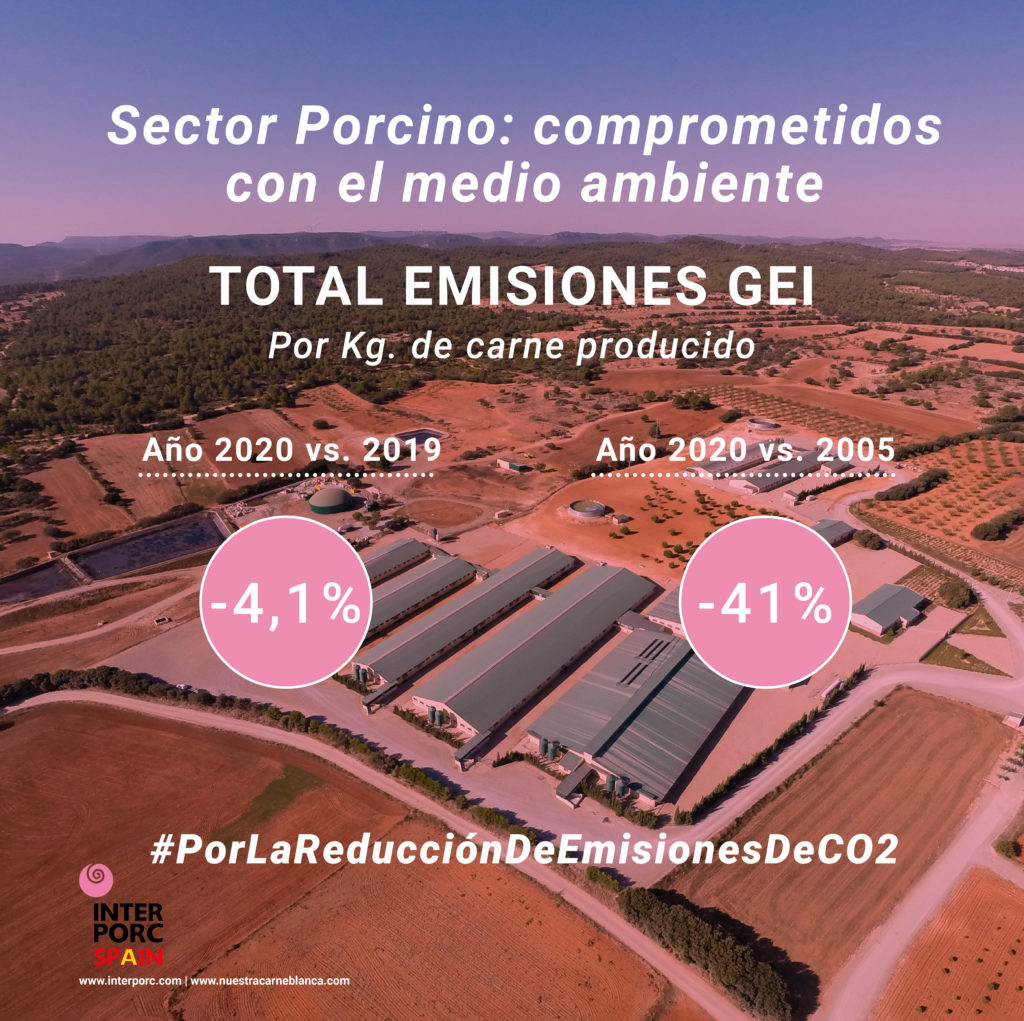In 2020 the Spanish white layer pig sector has reduced its emissions of Greenhouse Gases by 4.11% for each kilo of meat produced compared to 2019, according to data prepared by the Interprofesional del Porcino de Capa Blanca ( INTEPORC) based on the latest reports offered by the Ministries of Agriculture and Ecological Transition. With these figures, the trend towards reducing emissions in recent years caused by pig activity is reconfirmed, as highlighted by INTERPORC on the occasion of the celebration of the World Day for the Reduction of CO2 Emissions, also called World Day of Action against Climate Change.

rom the interprofessional it explains that, “if we go back to 2005, the reduction of GHG emissions from the pig sector for every kilo of meat produced has been reduced by 41% in the last 15 years. In that year, Spanish pig farms emitted 1 kiloton of CO2 for every 439 tonnes of meat produced, while in 2020 there have been less 748 tonnes of meat for every kiloton of CO2 emitted “.
It is therefore a sector that is growing sustainably year after year thanks to the strong awareness of pig professionals, who have been incorporating important measures aimed at reducing emissions and focused mainly on the improves during slurry storage and treatment.
The pig sector’s efforts in environmental matters are not limited to the reduction in the generation of GHG emissions, but extend to many other fields of activity, such as the reduction of water, electricity and fuel consumption or the lower generation of non-reusable plastics, waste or waste.
All of these environmental control and improvement measures that the sector has been applying in the last 30 years have contributed to the weight of pig activity over all national GHG emissions being only 1.9%.
















